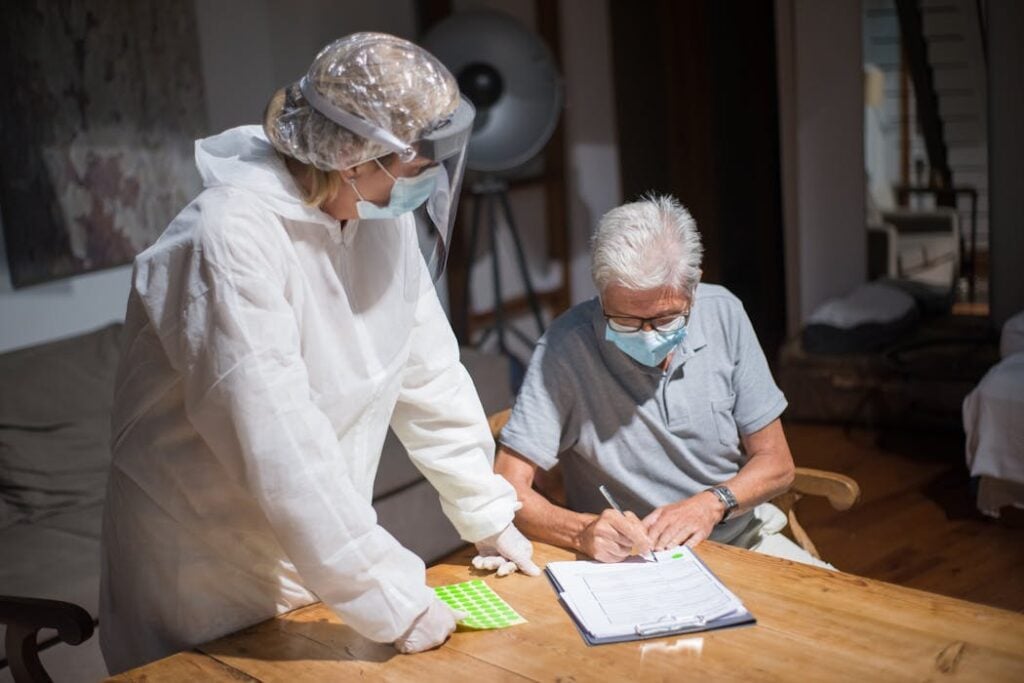Experts share how the right questions can save you time, money, and frustration at the doctor’s office.

Most patients leave their doctor’s office wishing they’d asked just one more question. But with short appointment times and complex information, it’s easy to miss what matters most. Knowing the right questions to ask can transform your care—from getting clearer answers to avoiding unnecessary tests or treatments. Medical experts agree that proactive, informed patients get better outcomes. Here are ten smart, time-saving questions that help you make every minute of your appointment count.
1. “What’s the Most Likely Cause of My Symptoms?”

Doctors often consider several possibilities at once, but many patients leave without knowing which one is most probable. Asking this question helps focus the discussion and avoid vague answers.
It also opens the door to a clearer plan—whether it’s additional tests or lifestyle changes. You’ll walk away understanding your doctor’s primary concern instead of feeling lost in medical jargon or uncertainty, as mentioned in Healthdirect.
2. “What Are the Best and Worst-Case Scenarios?”

It’s easy to worry about the extremes, but few patients ask for a realistic range of outcomes. This question helps you understand both the risks and the probabilities behind them.
When you know what’s most likely—and what’s rare—you can plan emotionally and financially. It also helps reduce unnecessary anxiety while ensuring you’re not blindsided by serious possibilities, as stated in CDC.
3. “What Happens If We Don’t Treat This Right Away?”

Many patients feel pressured to act fast, but some conditions can safely wait while you consider options. Asking this question helps clarify urgency versus preference.
A thoughtful answer can reveal whether immediate treatment is truly necessary or if observation, rest, or a second opinion might be just as effective. It also empowers you to make decisions on your own timeline, not just the clinic’s, as shared in Reader’s Digest.
4. “Are There Simpler or Less Expensive Options?”

Doctors may default to the most common or advanced treatment, but there are often equally effective alternatives. Asking about cost and simplicity encourages shared decision-making.
From generic prescriptions to physical therapy instead of surgery, this question can save you money and recovery time. Most physicians appreciate when patients are upfront about financial concerns—it leads to more practical, sustainable care.
5. “What Are the Side Effects or Downsides of This Plan?”

Every treatment comes with trade-offs. Asking this question ensures you understand potential side effects, long-term risks, or impacts on your daily life before committing.
This clarity helps you weigh whether the benefits truly outweigh the drawbacks. It also encourages your doctor to personalize your care instead of relying on one-size-fits-all recommendations.
6. “How Will We Know if the Treatment Is Working?”

Patients often start new medications or routines without clear markers of success. This question creates measurable goals—whether it’s pain reduction, lab results, or energy levels.
Knowing when to expect improvement keeps you engaged and prevents unnecessary frustration. It also strengthens communication, ensuring both you and your doctor track progress using the same expectations.
7. “Is This Normal for My Age or Health Background?”

What’s alarming for one person may be expected for another. Asking this question helps you distinguish between natural changes and genuine warning signs.
It also helps tailor medical advice to your specific situation. Doctors use age and history as key context, but they may not volunteer that information unless you ask. The answer often determines whether you need reassurance—or further investigation.
8. “Can You Explain This in Plain Language?”

Doctors use technical terms out of habit, but patients deserve clear, human explanations. Asking for simple language doesn’t make you uninformed—it makes you proactive.
When you truly understand your diagnosis and treatment, you’re more likely to follow instructions and notice red flags early. Most doctors appreciate this question—it ensures you’re working as a team, not guessing in the dark.
9. “Are There Lifestyle Changes That Could Help?”

Medication isn’t always the only—or best—answer. This question encourages your doctor to address root causes instead of just symptoms.
You might discover that diet, sleep, exercise, or stress management could improve your condition naturally. It’s a powerful way to take control of your health and reduce dependence on prescriptions.
10. “What Should I Watch For After This Appointment?”

Your visit doesn’t end when you walk out the door. Knowing what symptoms, side effects, or changes to monitor helps you catch problems early and avoid panic later.
This final question gives you a safety net—guidelines for what’s normal and what’s not. It also signals to your doctor that you’re engaged in your care, which builds trust and improves follow-up communication.
